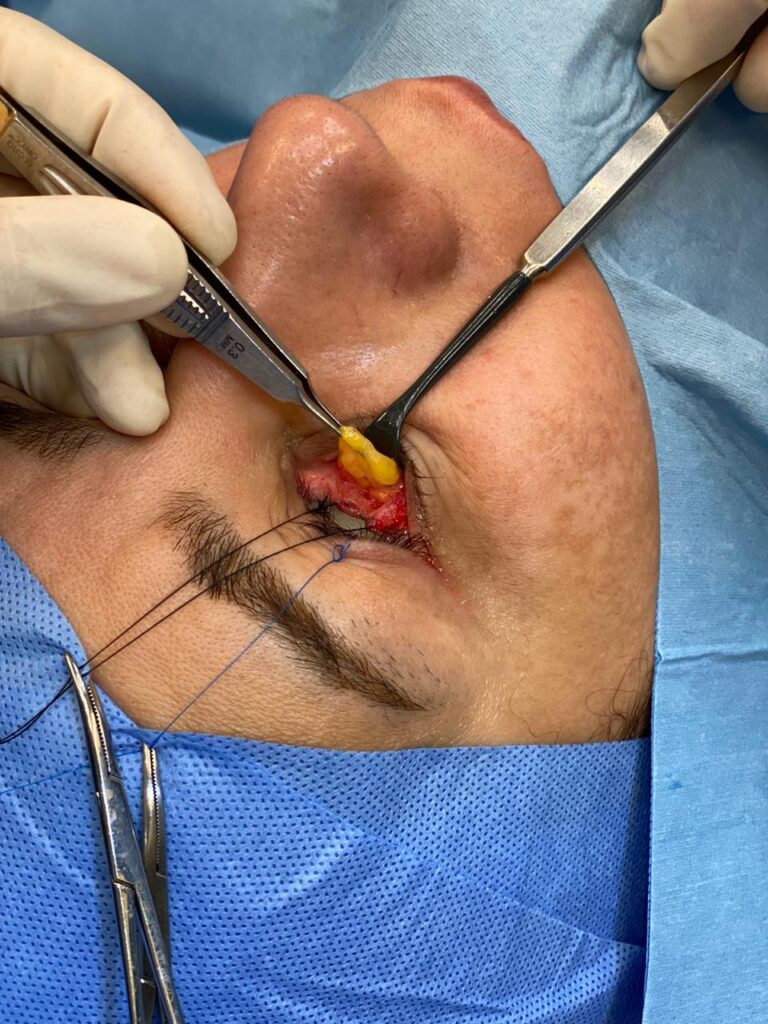Eyelid surgery, or blepharoplasty, is a transformative procedure that can rejuvenate the area around the eyes. However, if you’re on blood thinners, it’s crucial to discuss this with your surgeon. Understanding the interplay between anticoagulants and surgery is key to ensuring a safe and successful outcome.
Eyelid Surgery and Blood Thinners: Understanding the Connection
Blood thinners, or anticoagulants, can significantly impact surgical procedures. In the context of blepharoplasty, these medications can increase the risk of bleeding and bruising, making it essential to manage them carefully.
Preoperative Management of Antithrombotics
- Assessing the need for blood thinners is a critical step before any surgery, including eyelid surgery.
- Dr. Tarek emphasizes a tailored approach to perioperative anticoagulation, balancing the risks of bleeding with the benefits of preventing blood clots.
Keys to Success in Blepharoplasty While on Anticoagulants
- Employing strategies to minimize bleeding risks is paramount.
- Dr. Tarek focuses on individualized patient care to ensure the best outcomes.
Questions to Ask Before Eyelid Surgery on Blood Thinners
Patients should be proactive in understanding how their medication may affect surgery. Dr. Tarek recommends asking:
- How should I manage my blood thinner regimen before and after surgery?
- What are the specific risks associated with my anticoagulant during blepharoplasty?
Special Considerations for Patients on NOACs
- NOACs require careful consideration in cosmetic surgery.
- Dr. Tarek advises on the appropriate adjustments of NOACs for eyelid surgery.
Preparing for Eyelid Surgery: A Patient’s Guide
- Dr. Tarek provides guidance on how to prepare for blepharoplasty, including medication adjustments and surgical planning.
What to Expect During Recovery on Blood Thinners
- The recovery process may include special instructions for those on anticoagulants.
- Postoperative bleeding is monitored closely, with management strategies in place.
The Procedure: Blepharoplasty with Dr. Tarek
- Dr. Tarek’s eyelid surgery involves meticulous techniques to reduce complications associated with blood thinners.
Risks and Benefits of Eyelid Surgery on Anticoagulants
- While there are potential complications, these are mitigated with careful planning.
- The benefits of proceeding with surgery can outweigh the risks, even for patients on blood thinners.
Risks and Benefits of Eyelid Surgery on Anticoagulants “Transform Your Appearance: Non-surgical Ptosis Correction” “Transform Your Appearance: Non-Surgical Ptosis Rectification” Revamp Your Style: Non-Invasive Ptosis Treatment is a way to fix droopy eyelids without surgery, making you look fresh and stylish. It’s a simple treatment that can make a big difference in your appearance.
| Factor | Description | Source |
| Bleeding Risks | Linked with moderate or high risks in certain types of eyelid surgery | American Academy of Ophthalmology |
| Vision-Threatening Complications | Potential risk in surgeries with high bleeding risks | American Academy of Ophthalmology |
| Management of Antithrombotics | Essential for minimizing complications | NCBI |
Postoperative Care and Instructions
- Dr. Tarek provides detailed postoperative care instructions for patients on blood thinners.
- Knowing when to contact the surgeon post-surgery is crucial.
- The typical recovery time may vary for patients on anticoagulants.
- Patients can expect a detailed recovery plan from Dr. Tarek.
FAQs: Eyelid Surgery and Blood Thinners
Conclusion
Managing blood thinners during eyelid surgery is a delicate balance, but with Dr. Tarek’s expertise, patients can achieve excellent results safely.









